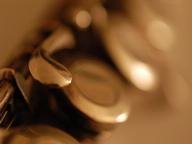Quiz Answer Key and Fun Facts
1. The earliest oboes appeared in the 17th century in France and carried the name 'hautbois.' What is the direct translation from the original French term?
2. Oboes didn't just spontaneously come into existence. They developed from an earlier, Renaissance instrument, known by which name?
3. Instruments in the oboe family all use what kind of reed to produce sound?
4. For a time, a more advanced oboe of German design came into popularity, until the French 'conservatoire' model became the dominant instrument and became the modern 'full conservatory' oboe in common use today.
But the German oboe also developed, blending with Austrian designs in a hybrid model developed by Josef Hajek in the 1880s. Still made and in use today, what is the name of this oboe?
5. There are six instruments in the modern oboe family still in use today, although really only two of them see any common use anymore. The soprano of the family is the oboe; which one is the tenor?
6. The bass oboe is pitched one octave lower than a regular oboe.
7. What is the approximate range of the oboe?
8. The oboe is traditionally used in the orchestra to play the note to which the other instruments tune. What is the note?
9. While oboes can be made from synthetic materials, most professional models are made of wood. The most commonly used wood, Dalbergia melanoxylon, is known by what name?
10. Which of these problems is an oboe most prone to when it's new?
Source: Author
reedy
This quiz was reviewed by FunTrivia editor
agony before going online.
Any errors found in FunTrivia content are routinely corrected through our feedback system.
